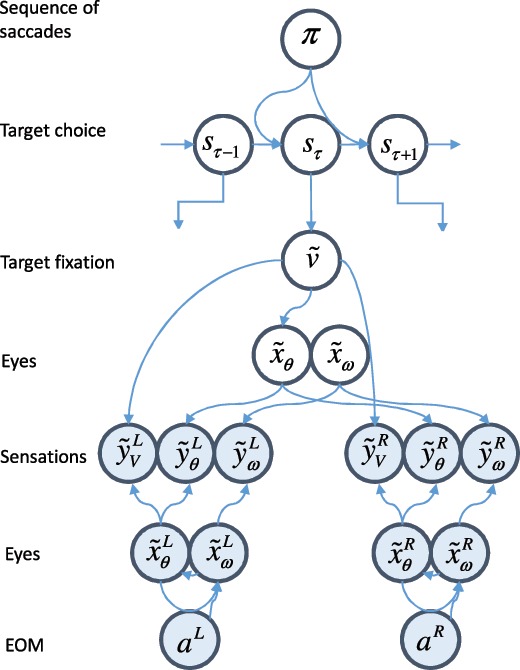Figure 1:

From decisions to eye movements. This figure shows the form of a generative model (unfilled circles) that generates predictions about visual and proprioceptive data, , from the policy, , discrete hidden states, , continuous hidden causes, , and continuous hidden states, , that the brain believes are in play. The filled circles indicate the generative process that describes how data are generated by physical processes in the external world. Superscripts refer to the left or right eye. Subscripts indicate modalities ( angular position; angular velocity; indicates vision). Note that action, , of the extraocular muscles (EOM) induces changes in angular velocity (i.e., accelerations) and that the generative model assumes only one gaze direction despite the fact that the generative process allows for each eye to move independently. This is based on the generative model and process in Parr and Friston (2018), but extends it with the addition of a discrete level. Figure 2 provides more detail on the mathematical specification of these types of models.
